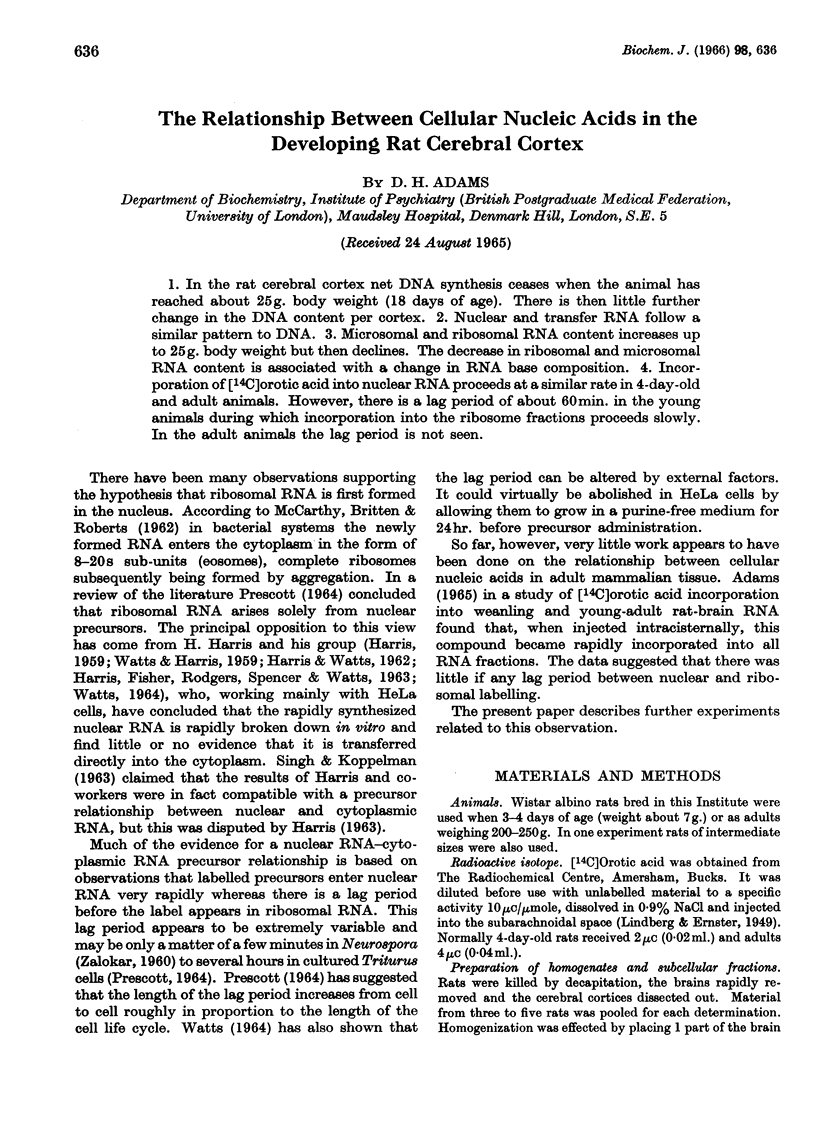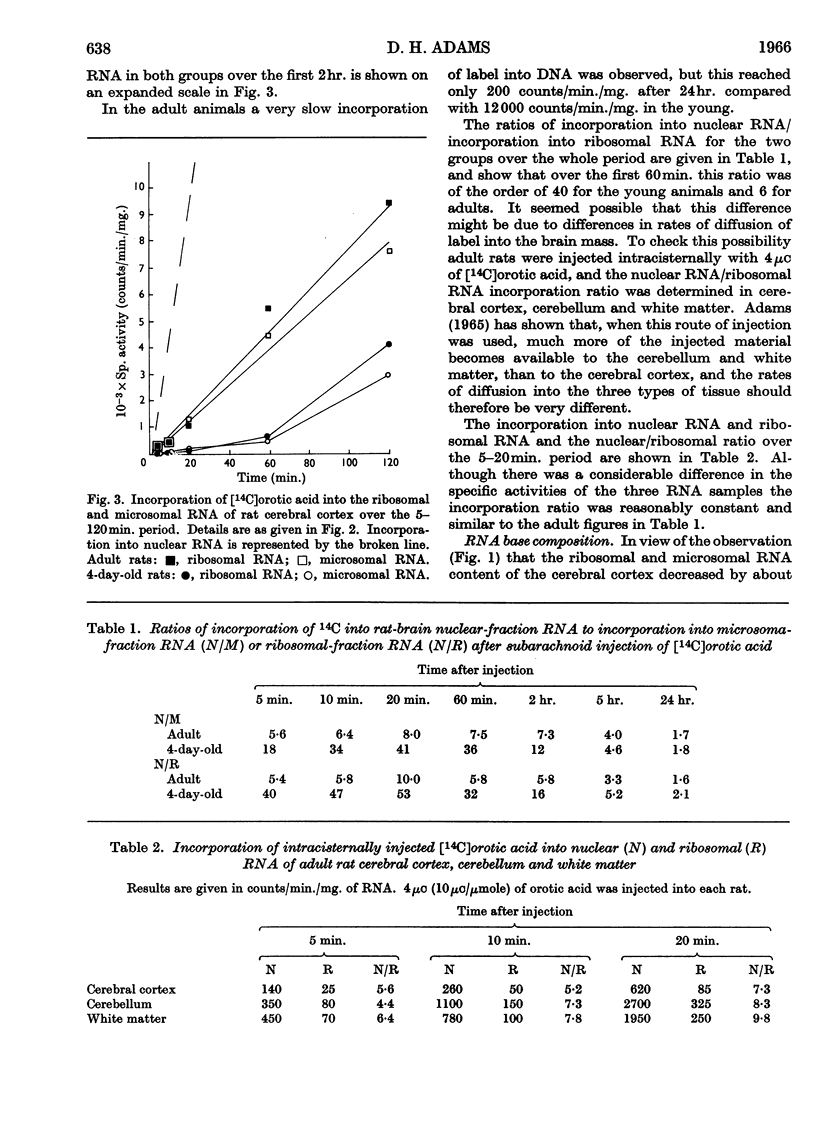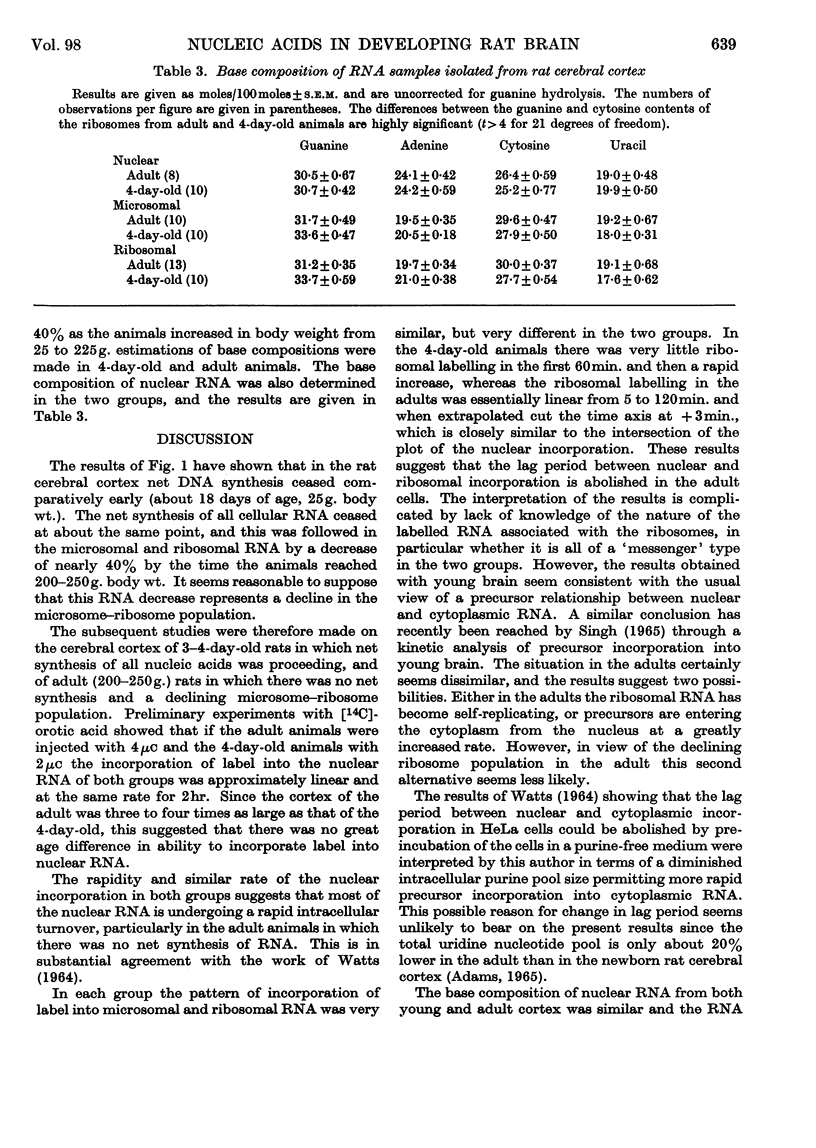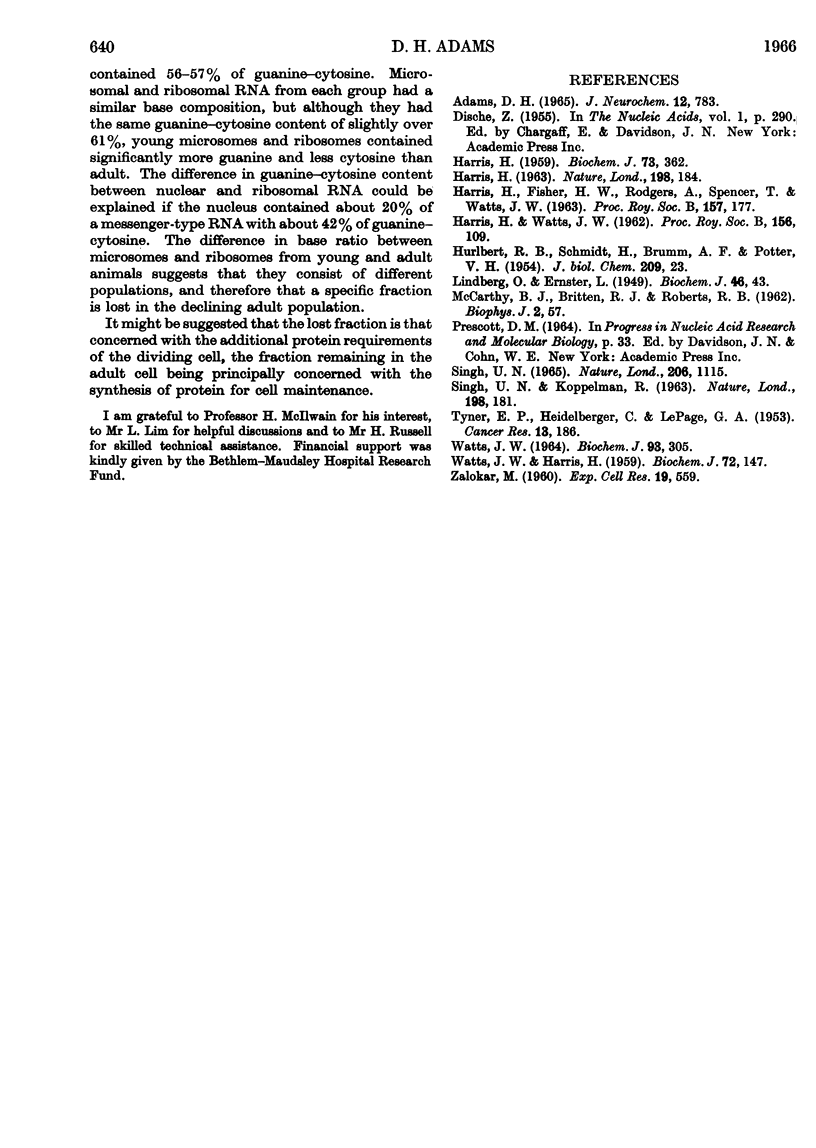Abstract
1. In the rat cerebral cortex net DNA synthesis ceases when the animal has reached about 25g. body weight (18 days of age). There is then little further change in the DNA content per cortex. 2. Nuclear and transfer RNA follow a similar pattern to DNA. 3. Microsomal and ribosomal RNA content increases up to 25g. body weight but then declines. The decrease in ribosomal and microsomal RNA content is associated with a change in RNA base composition. 4. Incorporation of [14C]orotic acid into nuclear RNA proceeds at a similar rate in 4-day-old and adult animals. However, there is a lag period of about 60min. in the young animals during which incorporation into the ribosome fractions proceeds slowly. In the adult animals the lag period is not seen.
Full text
PDF




Selected References
These references are in PubMed. This may not be the complete list of references from this article.
- Adams D. H. Some observations on the incorporation of precursors into ribonucleic acid of rat brain. J Neurochem. 1965 Sep-Oct;12(9):783–790. doi: 10.1111/j.1471-4159.1965.tb10262.x. [DOI] [PubMed] [Google Scholar]
- HARRIS H. Rapidly labelled ribonucleic acid in the cell nucleus. Nature. 1963 Apr 13;198:184–185. doi: 10.1038/198184a0. [DOI] [PubMed] [Google Scholar]
- HARRIS H. Turnover of nuclear and cytoplasmic ribonucleic acid in two types of animal cell, with some further observations on the nucleolus. Biochem J. 1959 Oct;73:362–369. doi: 10.1042/bj0730362. [DOI] [PMC free article] [PubMed] [Google Scholar]
- HARRIS H., WATTS J. W. The relationship between nuclear and cytoplasmic ribonucleic acid. Proc R Soc Lond B Biol Sci. 1962 May 15;156:109–121. doi: 10.1098/rspb.1962.0031. [DOI] [PubMed] [Google Scholar]
- HURLBERT R. B., SCHMITZ H., BRUMM A. F., POTTER V. R. Nucleotide metabolism. II. Chromatographic separation of acid-soluble nucleotides. J Biol Chem. 1954 Jul;209(1):23–39. [PubMed] [Google Scholar]
- Lindberg O., Ernster L. The turnover of radioactive phosphate injected into the subarachnoid space of the brain of the rat. Biochem J. 1950 Jan;46(1):43–47. doi: 10.1042/bj0460043. [DOI] [PMC free article] [PubMed] [Google Scholar]
- SINGH U. N., KOPPELMAN R. Relationship between nuclear and cytoplasmic ribonucleic acid. Nature. 1963 Apr 13;198:181–184. doi: 10.1038/198181b0. [DOI] [PubMed] [Google Scholar]
- Singh U. N. Synthesis of ribonucleic acid in developing rat brain in vitro. Nature. 1965 Jun 12;206(989):1115–1117. doi: 10.1038/2061115a0. [DOI] [PubMed] [Google Scholar]
- TYNER E. P., HEIDELBERGER C., LEPAGE G. A. Intracellular distribution of radioactivity in nucleic acid nucleotides and proteins following simultaneous administration of P32 and glycine-2-C14. Cancer Res. 1953 Feb;13(2):186–203. [PubMed] [Google Scholar]
- WATTS J. W., HARRIS H. Turnover of nucleic acids in a non-multiplying animal cell. Biochem J. 1959 May;72(1):147–153. doi: 10.1042/bj0720147. [DOI] [PMC free article] [PubMed] [Google Scholar]
- Watts J. W. Turnover of nucleic acids in a multiplying animal cell. 1. Incorporation studies. Biochem J. 1964 Nov;93(2):297–305. doi: 10.1042/bj0930297. [DOI] [PMC free article] [PubMed] [Google Scholar]
- ZALOKAR M. Sites of protein and ribonucleic acid synthesis in the cell. Exp Cell Res. 1960 Apr;19:559–576. doi: 10.1016/0014-4827(60)90064-1. [DOI] [PubMed] [Google Scholar]


